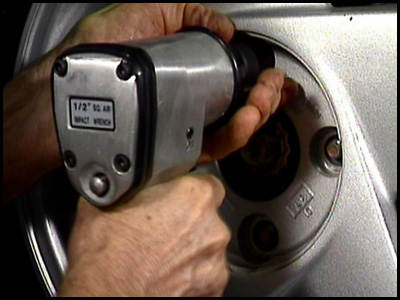

Also known as Raynaud’s syndrome, Raynaud’s secondary or hand-arm vibration syndrome, vibration white finger (VWF) gets its name from the destruction of blood vessels in the fingertips, which causes the fingers to lose color and appear lighter than the rest of the hand. It also destroys nerves in the fingertips, resulting in numbness or unpleasant tingling.
At first, symptoms of VWF are minor and of short duration. They include the fingertip sensations of tingling or numbness. The fingertips are also the first to show the change in color. As the damage accumulates, the loss of color spreads from the tips of the fingers towards the knuckles. Numbness and painful tingling intensify. Fingers may lose tactile sensitivity and feel cold to the touch.
If exposure to harmful vibration continues, tissue damage continues. Further injury to blood vessels leads to tissue hypoxia that affects nerves and muscles. Hand grip weakens. Touch sensitivity decreases. In extreme cases, there may be atrophy of the skin, muscles and subcutaneous tissues. Very rarely there is gangrene in the fingers which may require amputation if not controlled. Long before this stage, however, VWF hands have become useless.
Cold temperatures can trigger painful tingling, numbness and the change in color in the fingertips. So can smoking or caffeine. Cold, caffeine and smoking are vasoconstrictors. They reduce the flow in blood vessels. In hands already damaged by vibration, this constriction will trigger fingertip pain and pallor. But cold, caffeine and smoking are not causal factors. They didn’t cause the damage in the first place-that came from the vibration. They are triggers, in essence, setting the symptoms off.
The damage to the blood vessels and nerves comes from the vibration energy of the power tool. The soft tissues of the fingertips absorb the energy, then with prolonged exposure to vibrating power tools, the blood vessels and nerves slowly disintegrate. This damage is cumulative. It is also permanent. There is no way to repair the damage to those blood vessels and nerves. If the person continues to work with the tools, the damage to the tissues continues.
The only way to limit the damage is to stop using tools that generate vibrations. Not just the tools at work, but also those used in homes or hobbies-lawn mower, weed whip, snow thrower, hand sander, vacuum cleaner-anything that transmits vibration into the handle. This includes vehicles with rough-running engines, such as diesels or engines in poor condition, because they can send vibration energy to the hands through the steering wheel. All sources of hand-arm vibration should be avoided by anyone with VWF.
To prevent VWF, limit exposure to vibration:
• Ensure that power tools, motors and engines are maintained correctly.
• The greatest damage occurs in the range of 5 to 150 hertz, so seek tools that have less energy in this frequency.
• Limit the duration of exposure to vibration. Break up the work so there are times of non-tool use interspersed with tool use. Job rotation may be one way to achieve this, assuming there are jobs that don’t need power tools.
• Gloves and tool wraps can also protect the hands. They contain viscoelastic material to absorb some of the tool’s vibration, so less energy is transmitted to the hands. A word on gloves: True anti-vibration gloves are full-fingered. VWF damage starts at the fingertips, then proceeds palm-ward. It is the fingertips that need the greatest protection. Do not cut off the fingertips of gloves. Some people do this so they have better tactile feedback. They don’t realize they have removed the vibration protection from the place it was most needed. Do not be deceived by marketing ads that offer fingerless “anti-vibration” gloves. These are worthless for VWF protection.
As with many musculoskeletal disorders, prevention is the best approach. Vibration white finger is a serious occupational injury that can be effectively controlled to prevent damage to workers’ hands.
Delia Treaster, Ph.D., is a certified professional ergonomist and writes on various ergonomic issues, drawing on decades of experience in occupational ergonomics. She has been an ergonomic contractor with Humantech, one of the largest workplace ergonomics consulting firms in the United States. Prior to working for Humantech, Delia was an ergonomic consultant for the U.S. Postal Service, a senior ergonomic specialist with Travelers Insurance, and a research scientist at Battelle Memorial Institute. She has a master’s degree in human factors engineering and a Ph.D. in biomechanics from Ohio State University.
E-mails to Delia can be sent to ergocorner@yahoo.com.
Editor’s note: “Ergo Corner” is part of a series of guest spots by industry experts that will appear regularly on ASSEMBLY’s blog page. Check back frequently to read more commentaries from Delia, as well as contributions on product testing, automated assembly systems, electronics assembly and robotics.
Recent Comments
Helpful for Trainees
Cable Assembly Manufacturers
Huawei for manufacturing?
should have a scanner and then 3D print the repair
IPC-A-610 and IPC-j-std-001